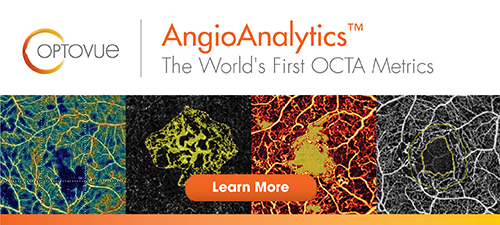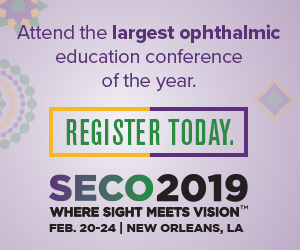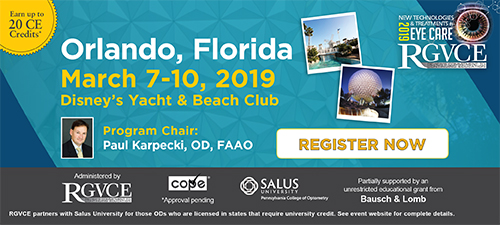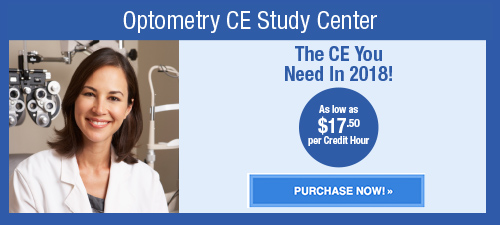
A
weekly e-journal by Art Epstein, OD, FAAO
Off the Cuff: CES 2019 – Innovation, Iteration and a Clearer Glimpse Into the Future
By now, attending the CES has become a yearly ritual for us. This year’s conference, as with every other year we’ve attended, was larger and busier than any other meeting you could imagine. The 180,000 attendees dwarf the largest meetings in eye care and give a real sense of how small we really are in the universe.
|
|||||
 |
||
| The Role of Soft Contact Lens Wear on Meibomian Gland Morphology and Function | ||||
This study evaluated the impact of soft contact lens (CL) wear on the morphology and function of the meibomian glands (MG). A total of 173 eyes of 87 soft CL wearers, and 103 eyes of 55 age-matched healthy volunteers were included into this study. The patients were divided into three groups according to the total duration of lens wear: less than three years, three to seven years, and more than seven years. Ocular Surface Disease Index (OSDI) scores, slit-lamp biomicroscopy findings, fluorescein staining of the ocular surface, tear film break-up time (BUT), Schirmer I tests and meibography findings were recorded in all patient eyes and were compared with controls.
The mean meiboscores of the upper and lower eyelids were significantly higher in CL wearers compared with controls. The mean BUT and the mean MG expressibility were significantly lower, whereas the mean OSDI score, corneal staining scores, percentage of partial/complete gland loss, and percentage of thickened and curled MG in upper/lower lids were statistically significantly higher in CL wearers. Meiboscores were significantly higher in patients with a total lens wear duration of more than three years compared to those with less than three years of lens wear for both upper/lower lids. The earliest morphological change in the MG of CL wearers was MG thickening, and this parameter was the only meibography finding that had the highest diagnostic ability for MG dysfunction. Researchers wrote that soft CL wear caused significant morphological and functional changes in MG, with thickening of MG presenting an early diagnostic finding of MG dysfunction on meibography. |
||||
SOURCE: Uçakhan Ö, Arslanturk-Eren M. The role of soft contact lens wear on meibomian gland morphology and function. Eye Contact Lens. 2018; Dec 28. [Epub ahead of print]. |
||||
|
|||
| Knowledge and Use of Cosmetic Contact Lenses Among Reproductive-age Women | ||||
To assess use, knowledge and complications of cosmetic contact lenses (CCLs) among women of reproductive age, a cross-sectional, anonymous, self-administered survey assessing cosmetic or decorative contact lens knowledge and experiences was completed by 686 women in Texas in 2017. The main outcome measures were use, knowledge, and associated complications.
Almost one in four women (164/686) reported prior use of CCLs, and most had worn the lenses >3 times. Women born in the United States, who knew someone who wore cosmetic lenses, or had visited an eye doctor in the past year were more likely to have used CCLs. Knowledge scores were low and the majority of cosmetic lens users experienced complications (61%). The most frequently reported complications were eye pain and discomfort (35%); itchy, watery eyes (34%); and red, swollen eyes (28%). Borrowing lenses was significantly associated with medical complications (88% of borrowers reported complications). Among 18 respondents who sought medical attention for a CCL-related problem, only 11% obtained care within 24 hours. Few participants had discussed CCL use with an eye doctor in the past year. Investigators determined that many U.S. women have used CCLs obtained from unauthorized sources. They added that knowledge of safe practices has been very limited and most users have developed complications. They concluded that interventions would be needed to educate the public about the risk of CCL use to reduce adverse outcomes. |
||||
SOURCE: Berenson AB, Hirth JM, Chang M, et al. Knowledge and use of cosmetic contact lenses among reproductive-age women. J Womens Health (Larchmt). 2019; Jan 2. [Epub ahead of print]. |
||||
| Self-measurement with Icare Home Tonometer, Patients' Feasibility and Acceptability | ||||
This study evaluated and compared the accuracy of self-measurement of intraocular pressure using the Icare Home rebound tonometer with Goldmann applanation tonometer, and assessed acceptability of self-tonometry in patients with glaucoma and ocular hypertension. In the study, 117 subjects were trained to use the Icare Home for self-measurement. The Icare Home tonometer readings were compared with Goldmann applanation tonometer, including one eye per patient. Agreement between the two methods of measurement was evaluated by Bland and Altmann analysis. A questionnaire was used to evaluate patients' perceptions of self-tonometry.
A total of 103 out of 117 patients (88%) were able to measure their own intraocular pressure, and 96 (82%) fulfilled the requirements for certification. The mean (SD) difference of Goldmann applanation tonometer minus the Icare Home was 1.2 (2.4) mmHg (95% limits of agreement, -3.4 to 5.9 mmHg). The magnitude of bias between the two methods depended on central corneal thickness, with greater bias at central corneal thickness <500 µm. In 65 out of 96 (67.7%) subjects, Icare Home results were within 2 mmHg of the Goldmann applanation tonometer. Seventy-three out of 93 (78.5%) subjects felt that self-tonometry was easy to use, and 75 patients (80.6%) responded that they would use the device at home. Researchers found that Icare Home tonometry tended to slightly underestimate intraocular pressure compared with Goldmann applanation tonometer. Most patients were able to perform self-tonometry and found it acceptable for home use. Researchers concluded that measurements using rebound self-tonometry could improve the quality of intraocular pressure data and optimize treatment regimen. |
||||
SOURCE: Cvenkel B, Velkovska MA, Jordanova VD. Self-measurement with Icare HOME tonometer, patients' feasibility and acceptability. Eur J Ophthalmol. 2019; Jan 11:1120672118823124. [Epub ahead of print]. |
||||
| News & Notes | |||||||||||||||
Advanced Tear Diagnostics Announces Advisory Board Appointment
|
|||||||||||||||
| RightEye Surpasses 100,000 Patient Tests RightEye announced that more than 100,000 RightEye patient tests have been administered. In addition to RightEye’s growing popularity among optometrists, RightEye has been embraced functional neurologists, sports vision specialists and other health care providers. The portable, all-in-one solution for vision-derived health screening tracks eye movements and correlates them to health issues. Read more. |
|||||||||||||||
| Atlantic Street Capital Forms Advancing Eyecare Holdings with Lombart
& Marco Partnership
Atlantic Street Capital announced it would form Advancing Eyecare Holdings with the partnership of its portfolio company Lombart Instrument, a U.S. distributor of ophthalmic instruments to ophthalmologists and optometrists, and Marco Ophthalmic, a high-tech instrumentation supplier. The transaction is expected to be completed in the first quarter of 2019. Marco is well-known for its focus on optimizing the refraction lane. Lombart offers products such as chairs, stands, slit lamps, refractors, tonometers, keratometers, eye projectors, perimeters and more. Read more. |
|||||||||||||||
|
|||||||||||||||
|
Optometric Physician™ (OP) newsletter is owned and published by Dr. Arthur Epstein. It is distributed by the Review Group, a Division of Jobson Medical Information LLC (JMI), 11 Campus Boulevard, Newtown Square, PA 19073. HOW TO ADVERTISE |




